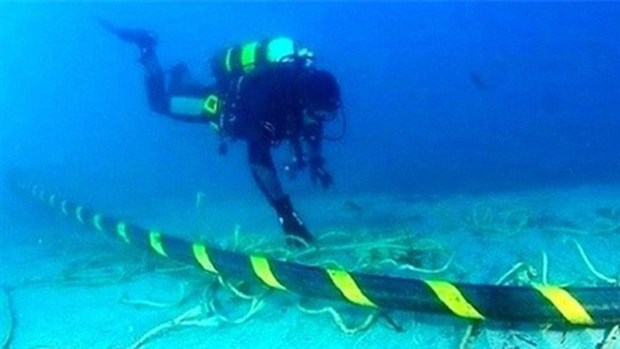
A undersea cable line being repaired. (Photo: vtv.vn)
Currently, four undersea cable routes that Vietnamese carriers exploit, including AAG, APG, AAE-1, and IA are experiencing issues, seriously affecting internet connection traffic from Vietnam.
This is the first time such incidents have happened at the same time, and even more unfortunately, during the Lunar New Year holidays.
The military-run provider Viettel has devised re-routing plans to regulate traffic on the remaining sea cable and land cables, and buy additional emergency capacity to ensure the best service quality for customers.
Stressing that this was an unfortunate ‘force majeure’, a representative from Vietnam Posts and Telecommunications Group (VNPT) said the provider was actively deploying measures to ensure international internet connections to its consumers, including sharing data loads between still available international lines, working with Facebook, TikTok, and YouTube, as well as optimising traffic on different cables.
Thanks to these efforts, platforms like Facebook, TikTok, and YouTube can still be accessed normally, while financial, banking, and insurance transactions can still be conducted.
Mobile data connections are also ensured, according to the VNPT representative.
However, it stressed that with breakages occurring on four out of five undersea cables, internet access would suffer, especially in ‘peak hours’ with activities that demand large data like online games or watching movies, etc.
Major domestic service providers are actively working with submarine cable systems and ship operators to determine the cause of the issues, the location of the incident and the repair plan, in the shortest time possible.
Other smaller providers like CMC and NetNam are also making moves to mitigate the incident’s consequences like pushing more traffic onto land cables via China and Cambodia.
Binh told VietNamNet online newspaper that with this situation, the network operators only had the option to compensate through land channels.
However, this plan could be delayed as China was also celebrating the Lunar New Year holiday, he noted. Most networks were frozen during the Tet holiday, therefore, it also affected the response progress of Vietnamese carriers.
In addition, the scenario that almost all undersea cable channels have problems was a very rare thing, Binh said, adding the carriers could have also taken it into account but were less prepared for this situation.
Landline cables were most likely not able to be upgraded quickly due to equipment limitations, he added.
"We believe that the intermittent situation and reduced quality of local international internet access would persist for the next few weeks," he said.
With the breakdown of undersea cables becoming more and more common, the need to add new cables was urgent, noted Binh.
Viettel and VNPT had announced their plans that they would exploit more cable routes to Quy Nhon this year.
In addition, in terms of Vietnam's internet in general, besides the need for more sea cables, it was also necessary to diversify land cable channels, especially through the West and Southwest, he said.
This was not only to meet the needs of internet users, but also to meet the safety level of Vietnam's communication with the world, said the VIA general secretary./.
VNA
 Da Nang invests over 200 billion VND in semiconductor chip design, AI development
Da Nang invests over 200 billion VND in semiconductor chip design, AI development



